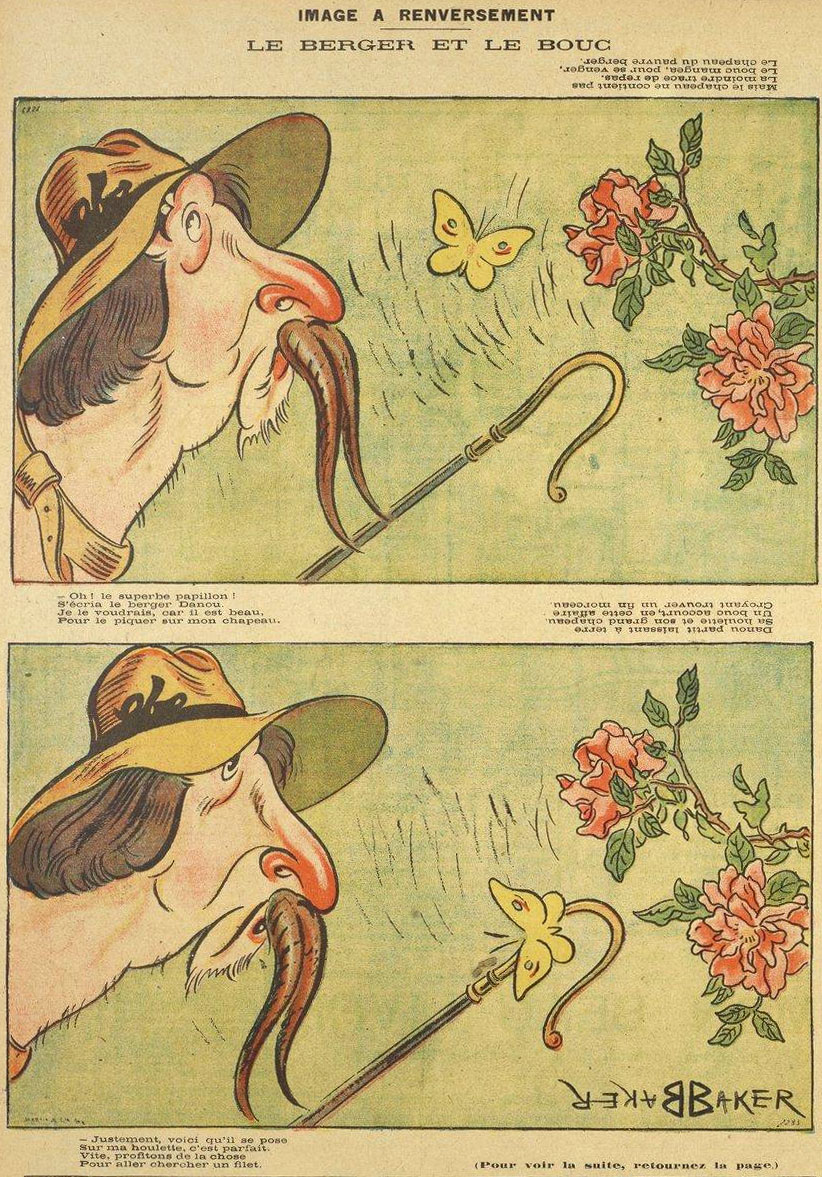 Baker, « Le berger et le bouc », La Jeunesse Illustrée, n° 176, 8 juillet 1906. Source : Gallica.bnf.fr
Baker, « Le berger et le bouc », La Jeunesse Illustrée, n° 176, 8 juillet 1906. Source : Gallica.bnf.fr
> Cliquer ici pour voir l’image à l’envers <
La récente numérisation par Gallica des premières années de La Jeunesse Illustrée, l’une des plus importantes revues pour enfants du début du XXe siècle (1903-1935), nous permet de revenir compléter un précédent article sur les « images à renversement » d’Alfred Z. Baker. Inspirées du comic strip The Upside-Downs de Gustave Verbeck, une dizaine de pages ont ainsi été publiées entre 1906 et 1907. En voici une sélection :
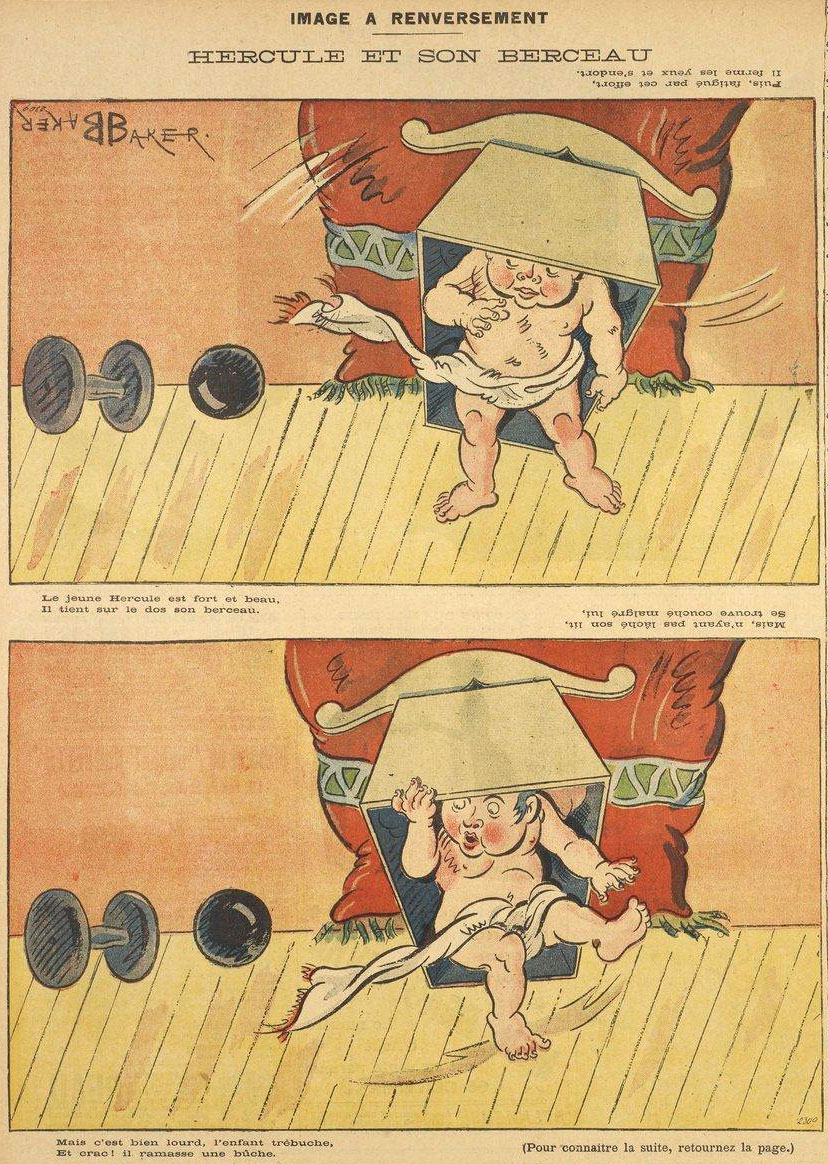 Baker, « Hercule et son berceau », La Jeunesse Illustrée, n° 183, 26 août 1906. Source : Gallica.bnf.fr
Baker, « Hercule et son berceau », La Jeunesse Illustrée, n° 183, 26 août 1906. Source : Gallica.bnf.fr
> Cliquer ici pour voir l’image à l’envers <
Pour ces pages, Baker s’est également inspiré de l’Américain Peter Newell. « Le berger et le bouc » (en tête d’article) ou « Hercule et son berceau » (ci-dessus) trouvent leurs équivalents dans les deux volumes de Newell, Topsys & Turvys, publiés à New York en 1893 et 1894 (1) :
 Peter Newell, Topsys & Turvys, The Century Co., New York, 1893, p. 7. Source : nonsenselit.org
Peter Newell, Topsys & Turvys, The Century Co., New York, 1893, p. 7. Source : nonsenselit.org
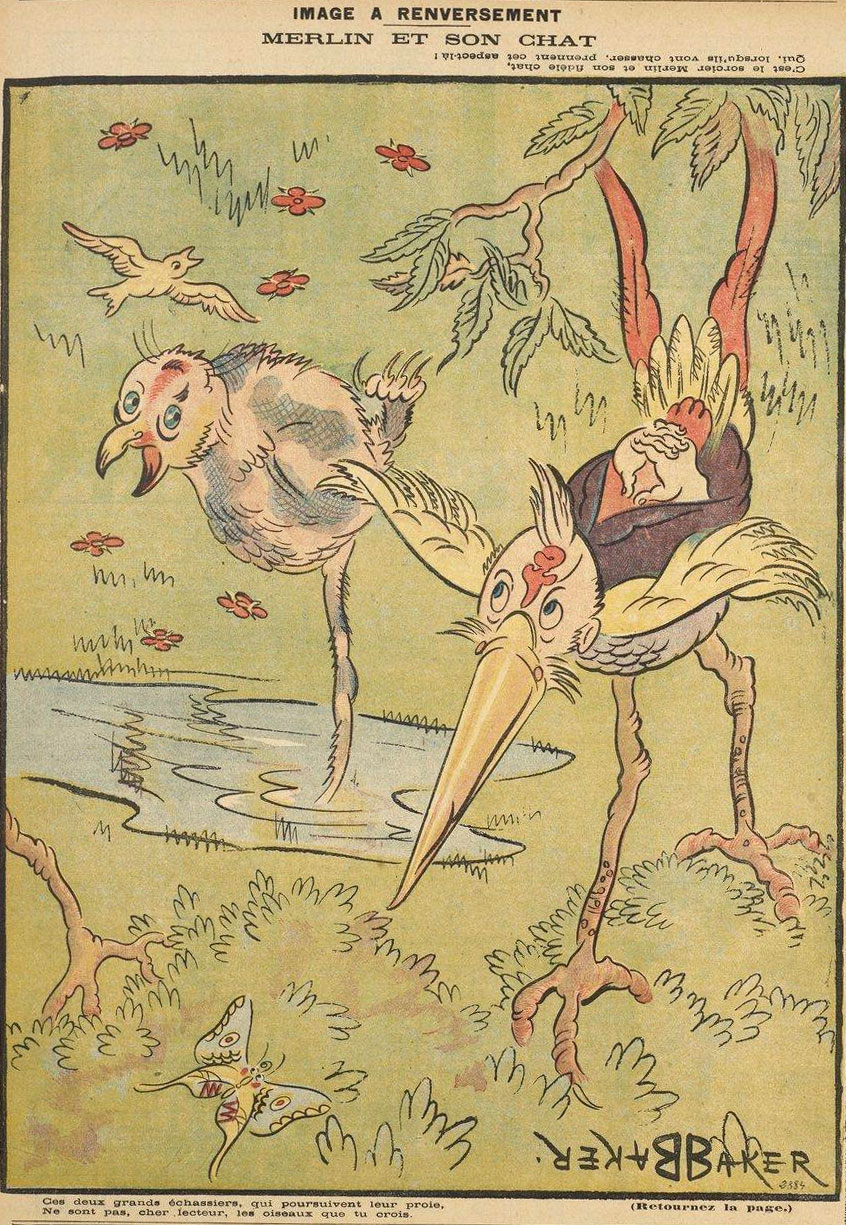 Baker, « Merlin et son chat », La Jeunesse Illustrée, n° 242, 13 octobre 1907. Source : Gallica.bnf.fr
Baker, « Merlin et son chat », La Jeunesse Illustrée, n° 242, 13 octobre 1907. Source : Gallica.bnf.fr
> Cliquer ici pour voir l’image à l’envers <
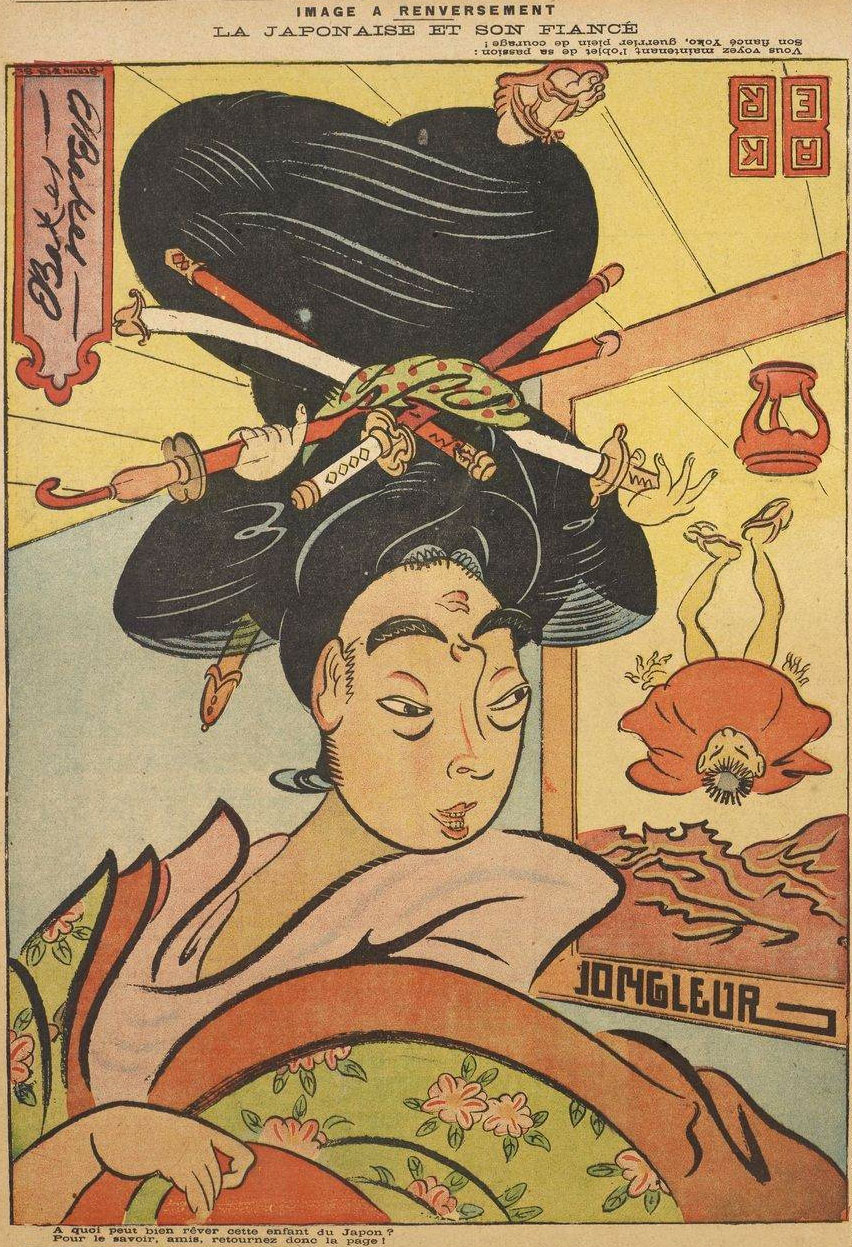 Baker, « La Japonaise et son fiancé », La Jeunesse Illustrée, n° 245, 3 nov. 1907. Source : Gallica.bnf.fr
Baker, « La Japonaise et son fiancé », La Jeunesse Illustrée, n° 245, 3 nov. 1907. Source : Gallica.bnf.fr
> Cliquer ici pour voir l’image à l’envers <
Voici la liste des « images à renversement » de Baker parues dans La Jeunesse Illustrée de 1906 et 1907 :
– n° 170, 27/05/1906 : Le pêcheur malheureux
– n° 176, 8/07/1906 : Le berger et le bouc
– n° 183, 26/08/1906 : Hercule et son berceau
– n° 188, 30/09/1906 : Le Jockey et le dentiste
– n° 199, 16/12/1906 : Image à renversement
– n° 213, 24/03/1907 : Le grand savant Botanico et le papillon
– n° 217, 21/04/1907 : La terreur de la mère Chipotard
– n° 226, 21/06/1907 : L’autruche-éléphant
– n° 242, 13/10/1907 : Merlin et son chat
– n° 245, 3/11/1907 : La Japonaise et son fiancé
Mise à jour du 6 avril 2013 : Les correspondances entre ces pages de Baker et celles de Newell s’expliquent mieux grâce aux informations fournies pas Marco Graziosi en commentaire (Merci à lui)..
- Une autre image de Baker s’inspire du même livre : « L’autruche-éléphant » (La Jeunesse Illustrée n° 226, 21 juin 1907) est un clone du double animal qui apparaît à la sixième page du premier Topsys & Turvys.[↩]

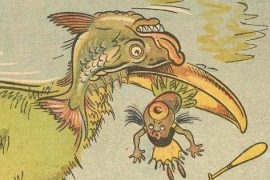

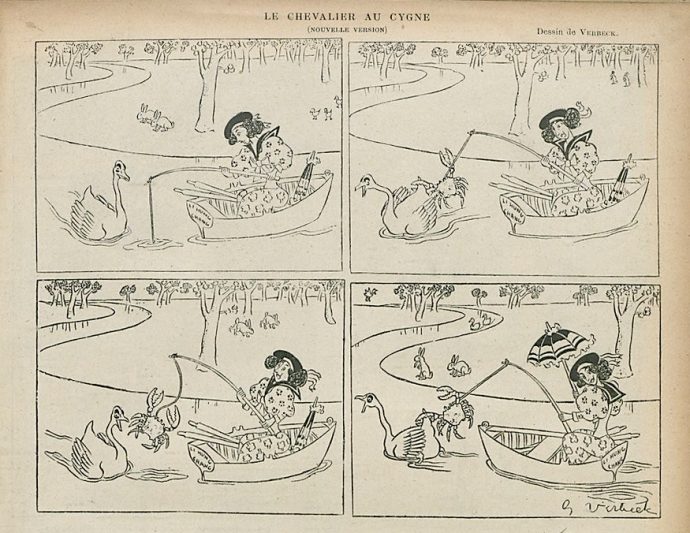
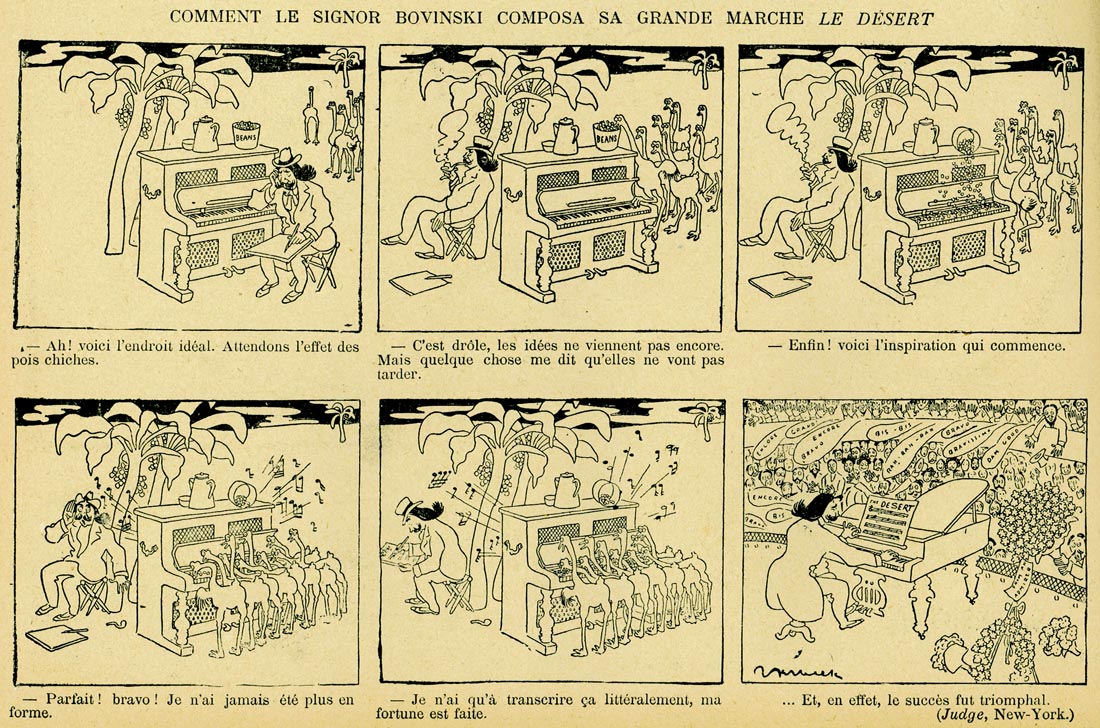
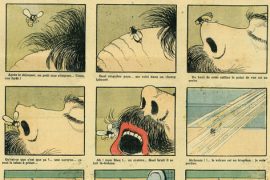
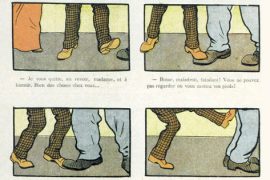
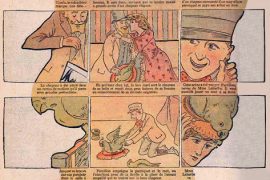

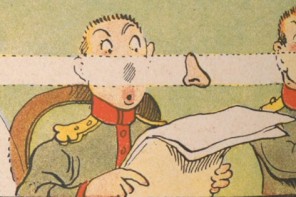

The Baker you identify as “Bernard” in a previous post, was actually Alfred Zantzinger Baker (1870-1940), for a time Peter Newell’s son in law. A short biography is available from the Beinecke Library website:
Baker was the son of a Baltimore industrialist. He was educated at the local schools and received art training at the Baltimore Charcoal Club, with continuing study in Paris at the Academie Julian and the Ecole des Beaux Arts. A tall and eccentric man with a keen interest in primitive cultures, Baker worked from Paris as a humorist-illustrator, publishing comics in magazines such as Life , Judge , Puck and Scribner’s. After marrying Mary Simmons in 1897, he collaborated with her and A. Crawford on a children’s book, Animal Jokes , which was published in 1899. Peter Newell made the acquaintance of the Bakers in 1900 when he came to Paris to draw the International Exposition for Harper’s Weekly. Their friendship continued when the Bakers returned to America, with Newell visiting at their home in Baltimore in 1901. Alfred Baker brought his wife to live in Leonia, New Jersey, by 1905, sharing quarters in a barn there with fellow illustrator Art Young. Soon after his arrival, he fell in love with the Newells’s teenage daughter, Helen, and the community was startled when the two eloped to Paris in the spring of 1905.
Baker’s work found an audience in France; he regularly published comics featuring his distinctive animal characters, and signed with his double-B monogram, in periodicals such as Rire , Bon Vivant , and Pele-Mele. The Bakers returned to the United States in 1908. After residing for a time in New York, they purchased a home in Nutley, New Jersey, and lived there with their two children, Tony (Alfred, Jr.) and Betty (Helen Louise). Problems in the marriage propelled Helen Baker’s flight, with her children, to her parents’ Leonia home in 1912; divorce proceedings followed, but the marriage was not legally ended until 1924.
Alfred Baker Sr., wrote and illustrated three children’s books: The Moving-Picture Book (1911), The Moving-Picture Glue Book (1912), and The Torn Book (1913). Later he developed other animal-theme books, patented several toys and wrote music and stories, but his career never regained momentum after his estrangement from the Newell family. He died on Christmas Day 1940, in Newark, New Jersey.
http://drs.library.yale.edu:8083/HLTransformer/HLTransServlet?stylename=yul.ead2002.xhtml.xsl&pid=beinecke:newell&clear-stylesheet-cache=yes
Marco, thanks a lot for this informations about Baker !
Notons que Gustave Verbeek est lui aussi passé par l’Académie Julian en 1892…soit probablement à la même époque que Baker ! Et qu’ils ont travaillés (parfois) pour les mêmes journeaux (Le Rire, Judge…).
Les liens se resserrent… Merci Gérard pour cette précision.
Belles images. Je fais la même remarque que celle suggérée à Killoffer qui vient d’en présenter une superbe aussi sur son facebook : il faut mettre l’image deux fois, une dans chaque sens. Sinon, on prend un torticoli ou alors il faut retourner l’écran, ce qui n’est pas commode.
@Renaud : Pour voir la planche inversée, il suffit de cliquer sur le lien sous l’image…
I have now created a set of pages on Baker, where you can turn the images upside-down using javascript: http://www.nonsenselit.org/newell/baker/index.html
Great, Marco !